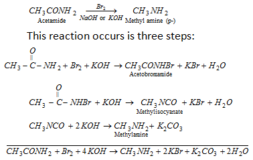Fajan Rule

source : microamaze blogspot.com
Fajan Rule: Solved examples
Q 5: Write decreasing order of Covalent character in LiF , LiCl ,LiBr .
Solution : LiBr > LiCl > LiF
Reason : Bigger is the anion, greater is the covalent character.
Q 6: LiCl is soluble in organic solvents like alcohol while NaCl is not ?
Solution : In LiCl , more covalent character is present due to small cation Li+. Smaller is the cation, more is the covalent character. Covalent compounds are soluble in organic solvents.
Q 7: Write decreasing order of melting point and increasing order of covalent character in CaF2 , CaCl2 ,CaBr2 & CaI2
Solution : CaF2 > CaCl2 >CaBr2 > CaI2
Decreasing order of melting point
CaF2 < CaCl2 <CaBr2 < CaI2
increasing order of covalent character
Reason : Bigger is the anion, greater is the covalent character. CaF2 is ionic ,so its melting point is high.
Q 8: Write decreasing order of melting point and increasing order of covalent character in BaCl2 , CaCl2 , MgCl2 & BeCl2
Solution : BaCl2 > CaCl2 > MgCl2 > BeCl2
increasing order of covalent character
BaCl2 > CaCl2 > MgCl2 > BeCl2
decreasing order of melting point
Reason : Smaller is the cation, more is the covalent character so BeCl2 is more covalent. Melting point of covalent compound is less than electrovalent compound.
Q 9: CuCl is more covalent than NaCl . why ?
Solution : According to Fajan Rule, Effective nuclear charge in cation having s2, p6,d10 configuration is greater than s2p6 configuration therefore cation having s2,p6, d10 configuration is more covalent.
Hence CuCl (configuration s2, p6,d10) is more covalent than NaCl.
Q 10: LiCl is more soluble in pyridine than in H2O . why ?
Solution : According to Fajan Rule Smaller is the cation, greater is the covalent character.
Hence LiCl has covalent character thus it is more soluble in organic solvents like pyridine than H2O.







